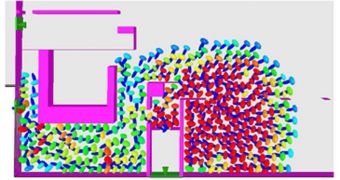Scientists have recently managed to discover a way of calculating the evolution of forces that are exerted inside a crowd, providing new hope that one day large groups of people will not kill some of their members via crushing.
This is not an uncommon phenomenon, experts say. Numerous incidents have been reported when the crowd was so thick that some individuals within were simply crushed by mechanical forces.
Surveying and determining when these forces become dangerous is a very important goal in physics today, but research in this area has been made difficult by the nature of crowds.
Exerting control over immense groups of people is never an easy task, as demonstrated by various accidents during which people stampeded over their own kind without even noticing it.
The most recent example is the Love Parade event, which was held for the last time in Germany, last month. Twenty-one people died after a crowd of 1.5 million was made to pass through a tunnel.
Muslims' pilgrimages to the Holy City of Mecca often end in disaster as well, as evidenced by the 2004 and 2005 stampedes, which killed a total of 600 people.
The loss of all these lives could have been avoided if organizers could have surveyed the crowds in real time, using software capable of detecting the build-up of crush forces.
Manchester Metropolitan University expert Peter Harding and his group now believe they may have discovered a way of doing just that.
They discovered a proxy to using the position and velocity of every individual in their software. While this may be recommended, the task is to computationally-intense to be performed in real-time.
Instead, the team says that keeping an eye on crowd order and the way it is changing is equally as effective in predicting the development of crush forces as analyzing the movement of each individual.
The researchers say that, generally, people inside crowds tend to exist in a so-called “ordered state.”
This order disappeared, and is replaced by a disordered state, as soon as the crush forces begin developing.
By analyzing changes in these states, the UK researchers believe that they could predict the development of crush forces inside crowds in very much the same way meteorologists predict storms, Technology Review reports.

 14 DAY TRIAL //
14 DAY TRIAL //